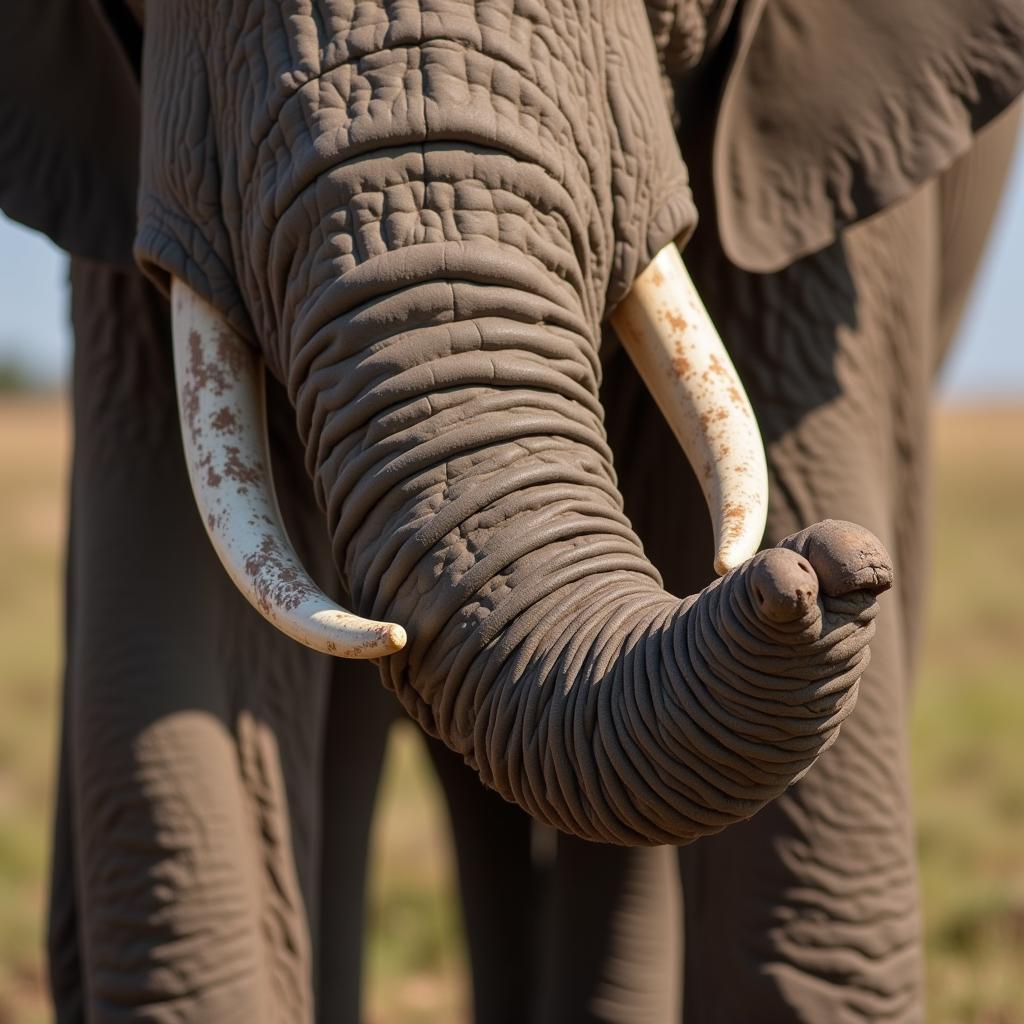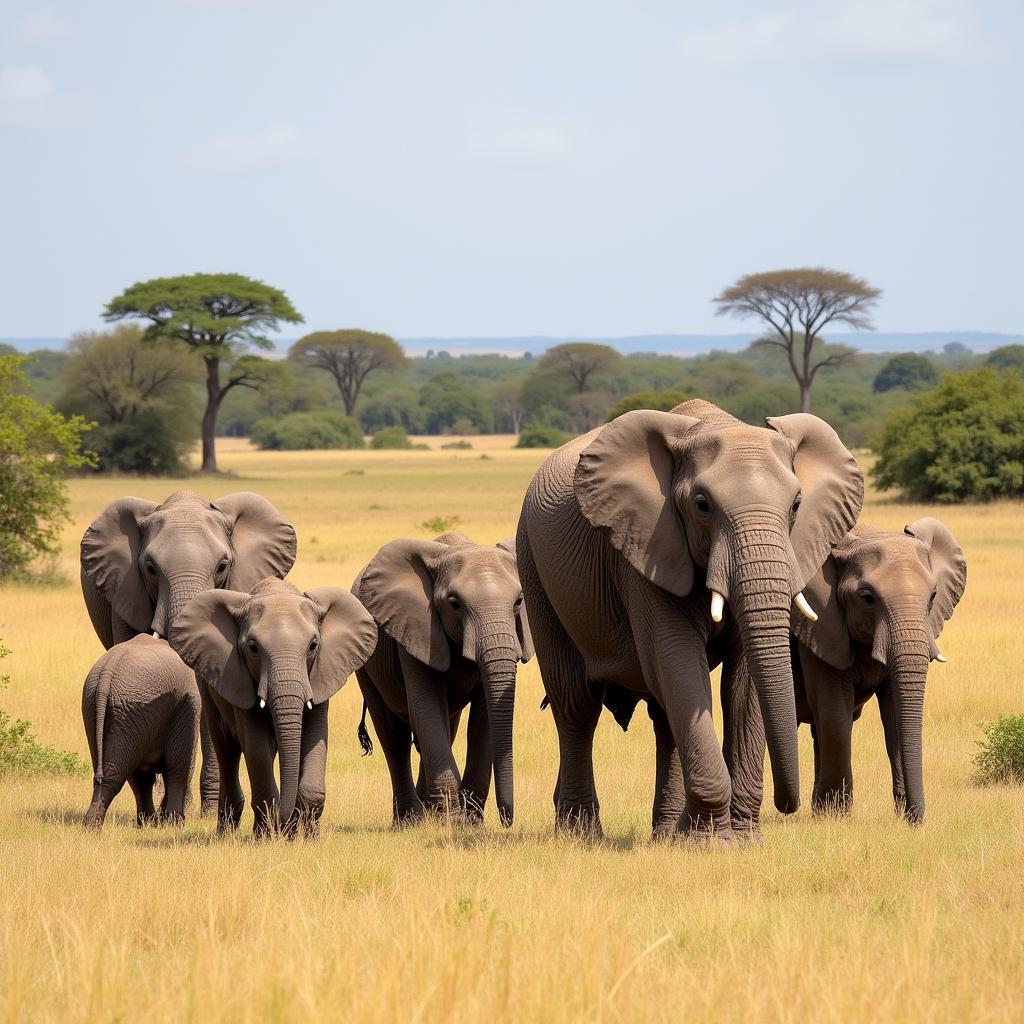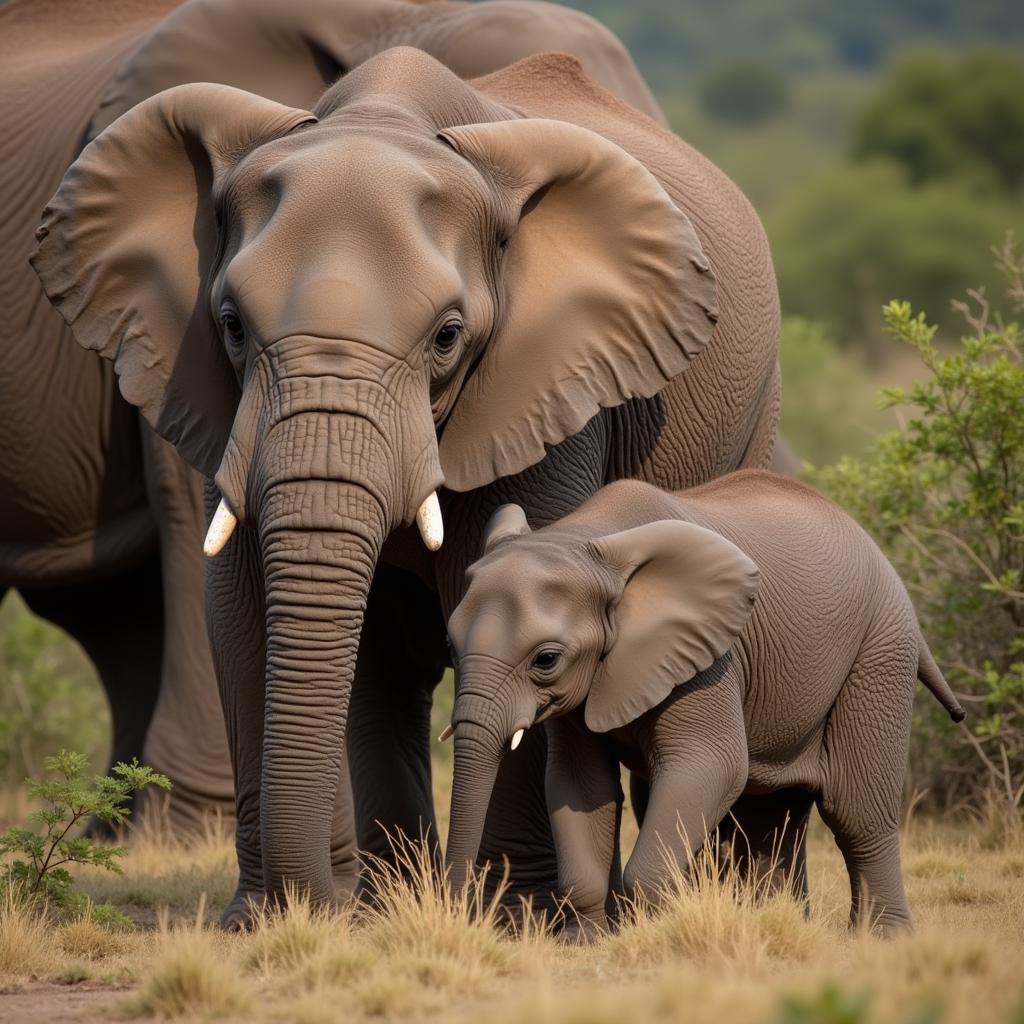African Elephant Description: A Majestic Giant
The African elephant, the largest land animal on Earth, is an iconic symbol of the African savanna. Their imposing size and complex social structures have captivated scientists and nature enthusiasts for centuries. This article delves into a comprehensive African Elephant Description, exploring their physical characteristics, behavior, and the crucial role they play in their ecosystem. Just after this introduction, you can discover more about their habitat. african elephant habitat description
Unveiling the Physical Attributes of African Elephants
African elephants possess several distinguishing features that set them apart from their Asian counterparts. Their enormous size is the most obvious, with adult males reaching heights of up to 4 meters and weighing over 6 tons. Females are slightly smaller, but still incredibly impressive. Their thick, gray skin, while appearing tough, is surprisingly sensitive to sunburn and insect bites. One of their most remarkable features is their trunk, a versatile appendage used for breathing, smelling, drinking, communicating, and grasping objects.
What makes an elephant’s trunk so unique? It’s essentially a fusion of the nose and upper lip, containing over 40,000 muscles, granting it incredible dexterity. From picking up a single blade of grass to lifting heavy logs, the trunk is a marvel of evolutionary engineering. Their large ears, another prominent feature, serve not only for hearing but also as radiators, helping to regulate their body temperature in the hot African sun.
 African Elephant Trunk Close-up
African Elephant Trunk Close-up
Social Structures and Behavior: A Complex Society
African elephants are highly social animals, living in matriarchal herds led by the oldest and most experienced female, known as the matriarch. These herds can range in size from a few individuals to several dozen. The matriarch plays a crucial role in guiding the herd, making decisions about foraging, migration, and protection from predators.
Within the herd, strong bonds exist between family members, particularly mothers and their calves. Calves rely on their mothers for nourishment and protection for several years, learning essential survival skills through observation and interaction with other herd members. This close-knit social structure provides young elephants with the support and guidance they need to thrive in the challenging African environment.
What happens when elephants encounter danger? The entire herd acts as a unified front, protecting the vulnerable young and driving away predators. Their collective strength and coordinated defense mechanisms make them a formidable force.
 African Elephant Herd on the Savanna
African Elephant Herd on the Savanna
The African Elephant’s Role in the Ecosystem: A Keystone Species
African elephants are considered a keystone species, meaning they play a vital role in shaping their environment and influencing the abundance and distribution of other species. Their foraging habits, such as uprooting trees and digging for water, create openings in the dense vegetation, promoting biodiversity and providing habitats for smaller animals. african elephant physical description
Dr. Anika Malima, a renowned wildlife biologist specializing in African elephant conservation, explains, “Elephants are ecosystem engineers. Their impact on the landscape is profound, creating opportunities for a wide range of species and maintaining the overall health of the ecosystem.”
Their dung, rich in nutrients, acts as a natural fertilizer, enriching the soil and promoting plant growth. It also serves as a food source for various insects and other invertebrates. Furthermore, elephant trails create pathways through dense vegetation, facilitating movement for other animals and contributing to seed dispersal.
Threats and Conservation Efforts: Protecting a Vulnerable Giant
Despite their size and strength, African elephants face numerous threats, primarily due to human activities. Poaching for ivory remains a significant challenge, driving down elephant populations in many parts of Africa. Habitat loss and fragmentation due to agriculture and infrastructure development further restrict their range and contribute to human-wildlife conflict. adopt an african animal
Recognizing the importance of elephant conservation, numerous organizations and governments are working to protect these magnificent creatures. Anti-poaching patrols, community-based conservation initiatives, and efforts to mitigate human-wildlife conflict are crucial strategies in ensuring the long-term survival of African elephants.
Professor Musa Kitoto, a leading expert in African wildlife management, emphasizes, “The future of African elephants depends on our collective efforts. By addressing the root causes of poaching and habitat loss, we can safeguard these iconic animals for generations to come.”
 African Elephant Calf with Mother
African Elephant Calf with Mother
Conclusion: The Future of the African Elephant
The African elephant, a symbol of strength and resilience, plays a critical role in the African ecosystem. Their unique physical characteristics, complex social structures, and ecological importance make them a truly remarkable species. Protecting these majestic giants from the threats they face is essential not only for their survival but also for the health and biodiversity of the African continent. Understanding the african elephant description is the first step in appreciating and conserving these magnificent creatures. african animal 7 letters
FAQ
- What is the difference between African and Asian elephants?
- What do African elephants eat?
- How long do African elephants live?
- What are the biggest threats to African elephants?
- How can I help protect African elephants?
- What is the social structure of an African elephant herd?
- How intelligent are African elephants?
Other Related Articles
You may find other articles about african art craft interesting! african art craft
Contact Us
For any inquiries or support regarding African wildlife, please contact us:
Phone: +255768904061
Email: kaka.mag@gmail.com
Address: Mbarali DC Mawindi, Kangaga, Tanzania.
Our customer service team is available 24/7.


